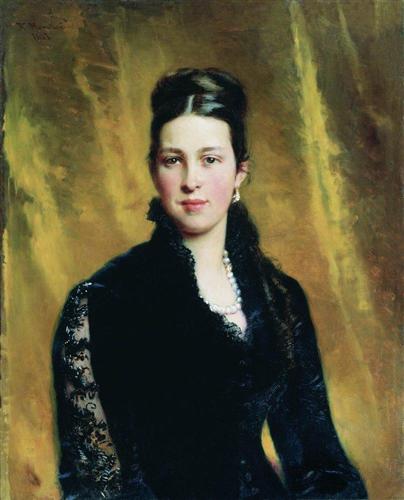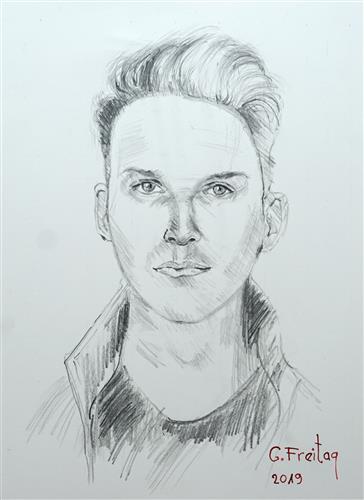图片尺寸:2479 × 3286 像素
作品名称:Portrait of a Young Venetian Woman
中文名称:一个年轻的威尼斯女人的画像
创作者:丢勒 Albrecht Durer
创作年代:1505
风格:北方文艺复兴
体裁:肖像画
材质:oil,panel
实际尺寸:245 x 325 cm
现位于:Kunsthistorisches Museum, Vienna, Austria
版权信息: Public Domain(公有领域)
无水印高清图下载
图片尺寸:2479 × 3286 像素
图片大小:2.73 MB
图片格式:JPG
下载方式:百度网盘
下载地址:

作品介绍
机器翻译:
这幅诚实的、特写的温柔面孔,与当时的威尼斯肖像画相一致。这位无名女子的沙色头发被一张闪亮的金网固定在脑后,这是威尼斯的流行时尚。丢勒用精心分布的高光来强调落在脸部两侧的卷发;这与她衣服上的精美丝带有着正式的对应关系。丢勒将丝带的预备底稿留在了左边,这一事实导致人们认为这幅画是未完成的,但对整幅画表面的技术分析表明了这一点。从构图的角度来看,这是有道理的:一条丝带的颜色与女人的头发相匹配,而另一条丝带则挑起了背景的单色调,在年轻女人的黑眼睛里也能找到。丢勒于1505年深秋抵达威尼斯。这幅肖像画被认为是他在那里画的第一幅作品。除了采用威尼斯肖像画的典型构图外,丢勒在新环境中的清新影响还体现在他对细节的压制上,以支持对整体的全面观察。与他在北方画的作品相比,丢勒改变了光线的特性,它显得温和而统一,而不是明亮地照亮每个轮廓。1507年1月,丢勒在返回北方之前,给他的朋友Willibald Pirckheimer写了一篇著名的哀歌:"哦,我不喜欢阳光下的朋友。Hy pin jch ein her, doheim ein schmarotzer"。("哦,我怎么会在这太阳之后受冻! 我在这里是个绅士,在家里是个寄生虫。") 在1923年被Kunsthistorisches博物馆购买之前,这幅作品一直由一位立陶宛收藏家拥有,没有被艺术界注意到。© Cäcilia Bischoff, Masterpieces of the Picture Gallery.
艺术史博物馆简要指南,维也纳,2010年。
原文:
This honest, close-up view of a gentle face is in keeping with Venetian portraits of the time. The sandy hair of the unknown woman is held at the back of the head by a shining golden net, the prevailing fashion in Venice. Dürer has used carefully distributed highlights to emphasise the curly hair falling to either side of the face; it has a formal counterpart in the fine ribbons of her dress. The fact that Dürer left the preparatory underdrawing of the ribbon on the left has led to the assumption that the picture is unfinished, but technical analysis of the entire surface of the painting speaks against it. It makes sense from a compositional point of view: the colour of the one ribbon matches the woman’s hair, while the other picks up the monochrome tone of the background and is also found in the young woman’s dark eyes. Dürer arrived in Venice in the late autumn of 1505. This portrait is believed to be the first work he painted there. In addition to his adoption of the typical composition of Venetian portraits, the refreshing influence of Dürer’s new environment is also seen in his suppression of details in favour of a comprehensive view of the whole. Compared with works that he painted in the north, Dürer altered the character of the light, which appears gentle and unifying instead of brightly illuminating every contour. Anticipating his return to the north in January 1507, Dürer wrote to his friend Willibald Pirckheimer a lament that has become famous: “O wy wirt mich noch der sunnen friren. Hy pin jch ein her, doheim ein schmarotzer.” (“Oh, how shall I freeze after this sun! Here I am a gentleman, at home a parasite.”) Until it was purchased by the Kunsthistorisches Museum in 1923, the work was in the possession of a Lithuanian collector and unnoticed by the art world. © Cäcilia Bischoff, Masterpieces of the Picture Gallery.
A Brief Guide to the Kunsthistorisches Museum, Vienna 2010.





